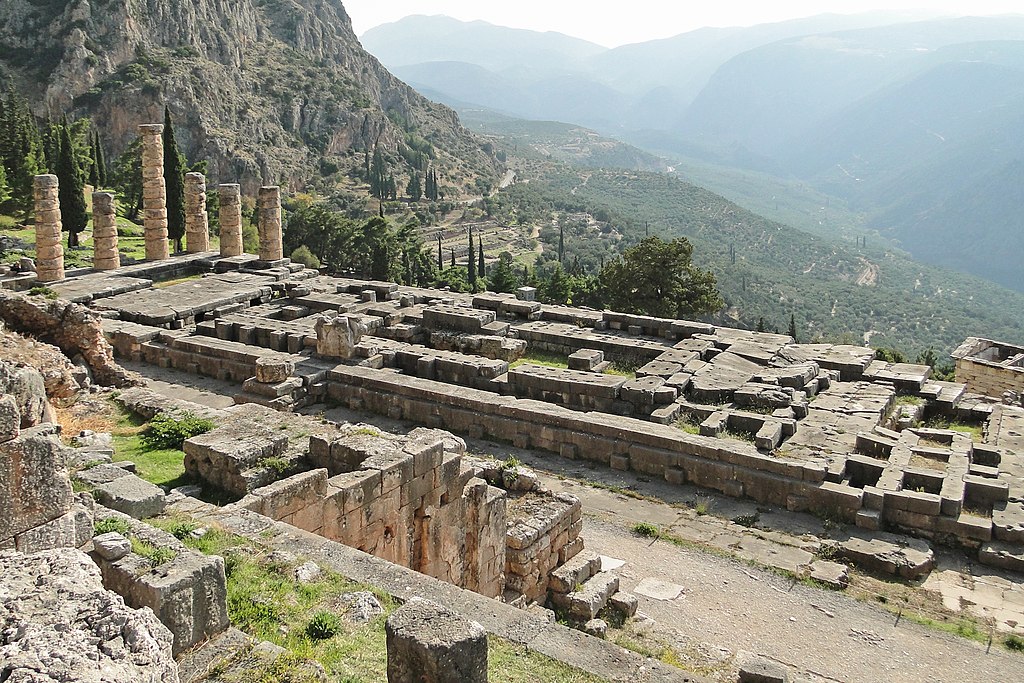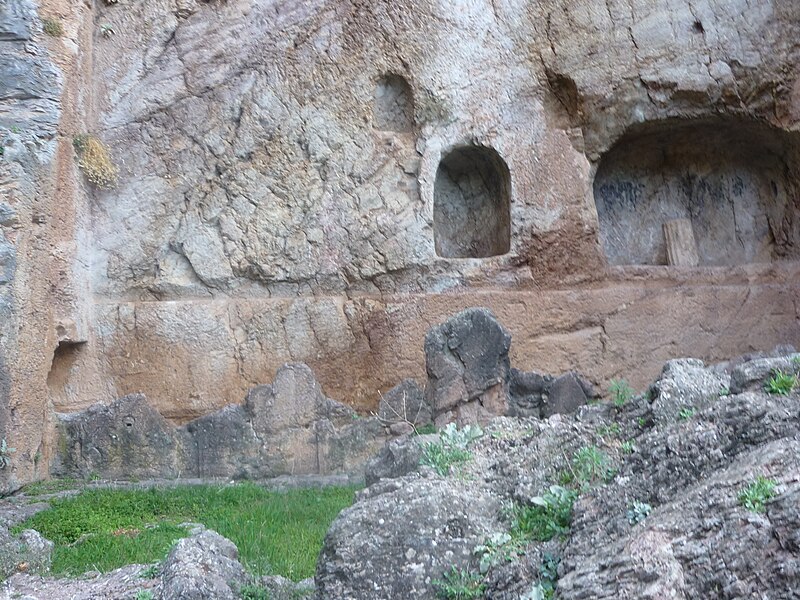Nikola Benin, Ph.D
Delphi
Today’s Delphi consists of an extensive archaeological site and museum, along with a couple of smaller, though not unimportant, classical offerings. Delphi village is a busy thoroughfare of two parallel streets crammed with hotels, restaurants, cafés and tourist shops. The center is compact and can be easily traversed in an hour or so. Delphi is worth at least a two-night stay to allow for a slow exploration of the Oracle site, and to soak up the still-present mystical atmosphere while watching the sun go down over a panoramicBuilt next to a cleft in the mountains of Central Greece, with a stunning view to the sea far below, Delphi was thought by the ancients to be the center of the known world. Princes and paupers alike would journey to Delphi to seek counsel from the mystic Delphic Oracle, and the enchanting Greek village has drawn dreamers, philosophers, writers, and hopefuls ever since.
Temple of Apollo at Delphi

Central among the number of imposing ruins that are interspersed on the Southern slopes of Parnassos mountain is the temple of Apollo. It is an imposing temple of the Doric order whose existence was woven through the turbulent history of the site, and endured numerous incarnations before it settled to the ruinous state we find it today, and which dates back to the 4th c. B.C. The temple of Apollo was first built around the 7th c. B.C. by the two legendary architects Trophonios and Agamedes. It was rebuilt after a fire in the 6th c. B.C.. and was named the "Temple of Alcmeonidae" in tribute to the noble Athenian family that oversaw its construction with funds form all over Greece and foreign emperors. This temple was also of the Doric order and had 6 columns at the front, and 15 columns at the flanks.
This temple was destroyed in 373 B.C. by an earthquake and was rebuilt for the third time in 330 B.C. Spintharos, Xenodoros, and Agathon, architects from Corinth. The sculptures that adorned its pediment were the creation of Athenian sculptors Praxias and Androsthenes. It was built to similar proportions and size as the Alcmeonidae version of the temple, with a peristasis of 6 and 15 columns along the short and long edges respectively.
Castalian spring

The Castalian spring was the sacred source of Delphi, and its water played an important role in the cult and procedure of the temple and of the oracle. This is where Pythia, the priests and the temple staff washed, and where the water used to clean the temple came from. The theopropoi - those wishing to consult the oracle - were also obliged to wash here in order to purify themselves.
The Castalian spring is located at the foot of the rocky crag Phleboukos (ancient Hyampeia), inside the ravine separating the two Phaedriades. Its waters form a stream, the so-called Arkoudorema, which runs into the Pleistos valley where, according to a myth, the Python had its lair. Water was also channeled to the homonymous fountain situated between the temenos of Apollo and the ancient gymnasium.
The Castalian fountain was originally built around 600-590 BC near the ancient route, and was refurbished several times since. Still visible today on the modern roadside, this so-called Lower Castalia is a rectangular structure of 8.20 by 6.64 metres enclosing a rectangular stone-built basin with a system of pipes and spouts. In front of the basin is a paved terrace with stone benches, reached by a small staircase. The water was channeled from the spring by a rock-cut subterranean pipe.
The later Castalian fountain, which dates to the first century BC and is located approximately fifty metres uphill, closer to the spring, is the one described by Pausanias. The fountain was built inside a rock-cut hollow eleven metres long by twelve and a half metres high, supplied with niches for the votive offerings to the nymph Castalia. The largest of these niches became a chapel of Saint John the Baptist in the Post-Byzantine period. Under the niches is an elongated rock-cut basin, ten metres long by half a metre wide, which was covered and had an opening for cleaning at one end. A closed pipe supplied the water. On the basin's fa?ade were seven bronze spouts separated by seven engaged rock-cut columns. In front of the basin was a paved terraced with stone benches, accessed from above by eight steps.
The later fountain was excavated by S. Dragatsis and E. Kastorchis in 1878, and the Lower Castalia by A. Orlandos in 1960. Both monuments have been conserved and restored.
Няма коментари:
Публикуване на коментар